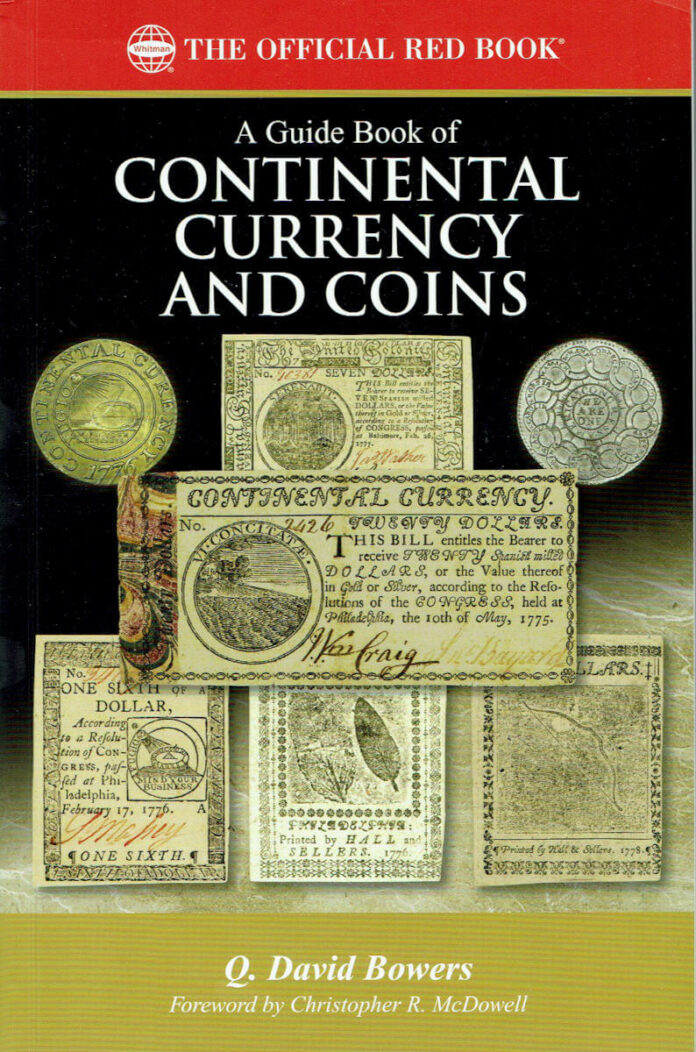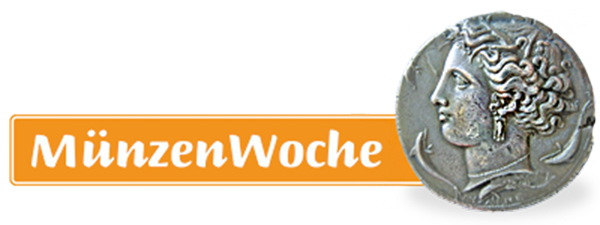
Europeans usually have a hard time understanding the intricacies of US numismatics. Those looking for summaries and prices of American coins and banknotes are usually well advised to turn to Whitman Publishing’s long-established Red Book series. In addition to the main catalogue on US coins, which is now available in a whopping 75th edition, they publish separate editions on special topics – just like this new volume “A Guide Book of Continental Currency and Coins”. The catalogue covers US means of payment that circulated during the Revolutionary War: Continental Currency Bills. These banknotes were issued by the American Continental Congress and the states. The catalogue was written by one of the most renowned US numismatists ever, Q. David Bowers.
Experiments at the Beginning of US Monetary History
Continental Currency Bills are quite simple paper banknotes that were often numbered and signed by hand. They are adorned with emblems chosen by Benjamin Franklin for this very purpose. In addition, they feature an exciting early method of counterfeit protection: the impressions of various leaves were printed on the banknotes, the fine and individual structure of the leaves was supposed to make it impossible to create exact counterfeits with the means of the time. However, many fake bills entered circulation. One reason for it was that the British deliberately put large quantities of counterfeit money into circulation in order to bring the rebellious colonists to their knees with inflation. Since too many notes were issued in general, Continental Currency Bills experienced an enormous decline in value.
More than 200 different bills were printed between 1775 and 1779, and they all are included in this catalogue, each with neat illustrations, number of issued bills and a Whitman catalogue reference number. Since both 2020 and 2009 market prices are given, you can see the movement of prices. In addition to paper money, this catalogue covers the controversial but highly interesting Continental dollars of 1776 – today, experts disagree as to whether these specimens should be classified as coins or not.
Everything You Need to Know – And More
The catalogue section is complemented by a wealth of background information and explanations on the bills and their origin. For example, Bowers makes the effort to present and explain the emblems used on the bills in an overview, he gives hints for collectors and features historical passages and quotations on the subject. Appendices cover other aspects related to the subject, such as the contemporary counterfeits mentioned above. The entire volume is anything but dull, it is intended to bring the reader back to the time of the American Revolutionary War – through the text as well as the design. Large-scale illustrations show scenes from the war and personalities of the time; the fonts of headings, headers and cover pages imitate contemporary handwriting. This would not have been necessary, but may spark the imagination of many readers.
David Bowers’s “A Guide Book of Continental Currency and Coins” provides a handy catalogue on a particular topic within US numismatics for the equivalent of 17 euros. In addition, readers get a lot of background knowledge on collecting Continental currency and other general information on the subject. Those who collect these early American banknotes, want to or would simply like to learn all about them while daydreaming in their armchair at home about the Revolutionary period, should not hesitate to purchase this work.
You can order the book from the Whitman Publishing website.
You can learn more about Q. David Bowers on Wikipedia.


